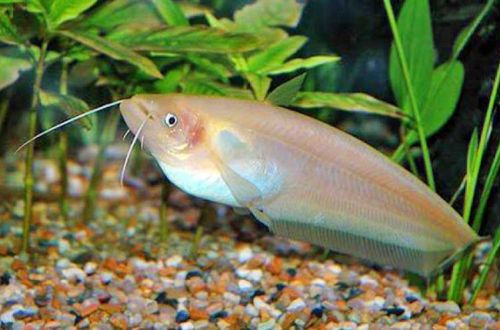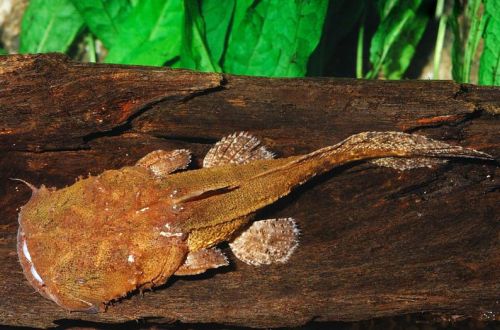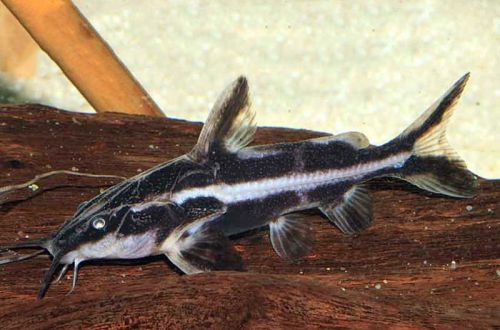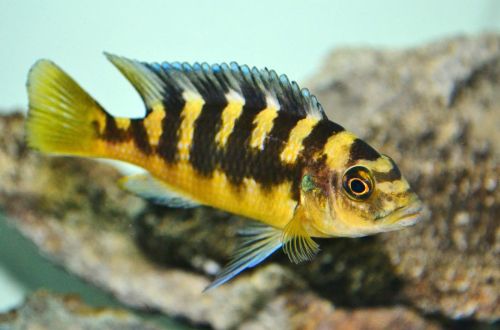
bumblebee cichlid
Pseudotropheus Crabro, Chameleon Cichlid or Bumblebee Cichlid, scientific name Pseudotropheus crabro, belongs to the Cichlidae family. Representative of the Mbuna cichlid group. Differs in quarrelsome and aggressive behavior, which makes it difficult to find neighbors in the aquarium. Otherwise, a fairly simple fish to keep and breed for an experienced aquarist.

Contents
Habitat
Endemic to Lake Malawi in Africa, one of the largest freshwater reservoirs on the planet. It is located on the territory of three states at once – the eponymous Malawi, Mozambique and Tanzania. Fish live everywhere throughout the lake, most often found in its central part. They prefer regions close to rocky coastlines with numerous hiding places in the form of caves and grottoes.
Brief information:
- The volume of the aquarium – from 180 liters.
- Temperature – 24-28°C
- Value pH — 7.6–8.8
- Water hardness – medium to high hardness (10-25 dGH)
- Substrate type – sand / gravel
- Lighting – moderate
- Brackish water – no
- Water movement – weak, moderate
- The size of the fish is 12–15 cm.
- Nutrition – any combination of protein and plant foods
- Temperament – aggressive
- Keeping in a harem with one male and several females
- Life expectancy about 10 years
Description
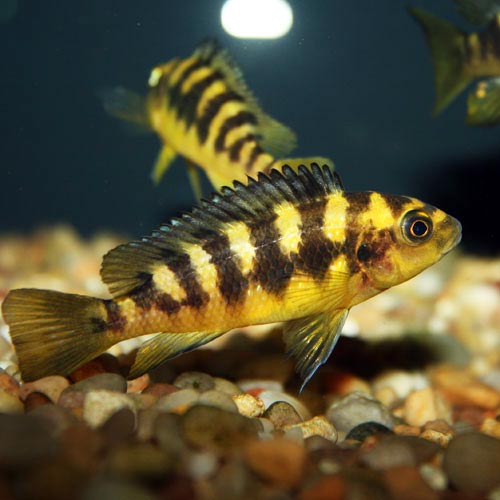
Adult males reach a length of up to 15 cm, females up to 12 cm. The color is yellow with blue tints on the edges of the fins. The body pattern consists of rows of black stripes. In males, the coloration is more saturated. The name “Cichlid-chameleon” was given to the fish due to the ability of males to change color during the breeding season, when it becomes the darkest.
Food
Omnivorous species. In the wild, it feeds on algae, benthic crustaceans, insect faces, fry and caviar of other fish. A similar diet includes protein-rich food, while other Mbuna consume more plant-based foods. In a home aquarium, these features should be taken into account. It is recommended to feed plant-based foods that contain animal proteins, such as fish, shrimp, worms and various crustaceans.
Maintenance and care, arrangement of the aquarium
The optimal size of the aquarium for a small group of fish starts from 180 liters. The design is simple and consists of a sandy or gravel substrate with heaps of rocks and stones, with which you can make caves, gorges. As a shelter, any other items at the discretion of the aquarist are also suitable. There is no need for living plants. Such a simple design is quite consistent with the characteristics of the natural habitat of Lake Malawi.
The key to successful keeping of Bumblebee Cichlids is to maintain stable water conditions with suitable pH and GH values. However, a protein-rich diet and a large amount of organic waste produced can quickly degrade water quality. To keep the biological system of the aquarium in balance, it will be necessary to install a productive filtration system, along with a weekly replacement of part of the water (20-40% of the volume) with fresh water.
Behavior and Compatibility
Dominant males are aggressive towards relatives and potential rivals. In a small aquarium, it is permissible to keep only one male in the company of several females. Covers are a must. It is not uncommon for females to die from excessive “attention” during spawning. Large tanks can be kept with other aggressive Mbuna of comparable size. Provided that each male will have enough space to form a territory that they will protect.
Breeding / breeding
Under favorable conditions, breeding Pseudotropheus Crabro does not cause much trouble. With the onset of the mating season, the male becomes almost completely black and begins to actively court the females. If they have nowhere to hide, the consequences can be dire. When the female is ready, she accepts courtship and lays 20–60 eggs. After fertilization, he takes them into his mouth, where they will be for the entire incubation period. A similar mechanism of egg-bearing has developed evolutionarily and is characteristic of most species of cichlids in Lake Malawi.
Eggs develop within 17-21 days. At this time, the female should be away from the male, who continues his courtship, either in a safe shelter, somewhere in the corner of the aquarium, or in a separate tank with identical water conditions. After the appearance of fry, the female continues to guard her offspring for several more days. Juveniles grow rapidly and require regular food in the form of Artemia nauplii or ground/powdered dry food particles.
Fish diseases
The main cause of most diseases in Malawian cichlids is inadequate housing conditions and poor quality food, which often leads to such a disease as Malawi bloat. If the first symptoms are detected, you should check the water parameters and the presence of high concentrations of hazardous substances (ammonia, nitrites, nitrates, etc.), if necessary, bring all indicators back to normal and only then proceed with treatment. Read more about symptoms and treatments in the Aquarium Fish Diseases section.



